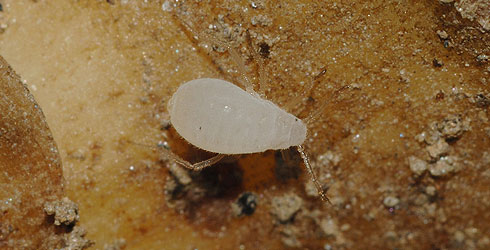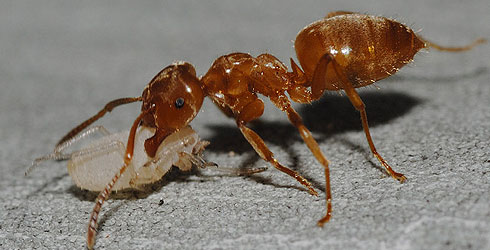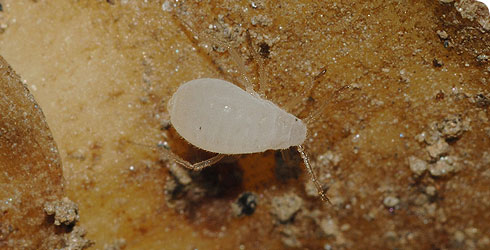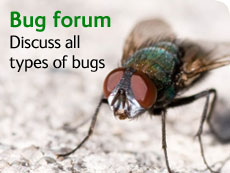Trama troglodytes (root aphid)
Trama troglodytes is a large white aphid that feeds on the roots of many species of composite plants (Asteraceae), including thistles, dandelions and globe artichokes. It is often found on the roots of plants growing on verges and wasteland.
Colonies of Trama troglodytes are situated just below ground level and are always diligently attended by ants. So, ants running around the base of a composite plant suggest aphids are present.
The aphids become very active when disturbed and wave their long hind legs. If the roots are pulled up, they drop from the plant.
Species detail
Trama troglodytes is perhaps the commonest species in its genus in Europe
Its eyes are greatly reduced as it lives underground, and it has long hind legs that it uses to interact with the ants that help keep the aphid colony clean.
Most T troglodytes aphids are female and produce live female young, without the need for a mate (parthenogenesis). But recent research by Museum scientists has shown that males of the species do exist.
-

Taxonomy
T. troglodytes feeds on liquid food which it sucks up through highly modified very thin tubular mouthparts called ‘stylets’. Find out how T. troglodytes and its close relatives’ differ, not only in their taste in food.
-

Distribution
Find out where you might find T. troglodytes.
-

Biology
T.troglodytes aphids are almost blind, often wingless and predominantly female. Find out more about how this aphid has adapted to life underground, and how it reproduces without a male mate.
-
References
Get further information about T. troglodytes.
Images

Trama troglodytes on a root.
© Jarmo Holopainen
Trama troglodytes being carried by an ant worker to a new host plant.
© Jarmo Holopainen
Ant worker checks Trama troglodytes (root aphids)

Ant worker tends to feeding root aphids.
Author
Roger Blackman
Scientific Associate
Department of Entomology
Toolbox
Buy insect and arachnid books online

Visit the online shop to find all our authoritative guides on this fascinating animal group.
You can also buy other books, DVDs and lots of gifts inspired by the natural world.

